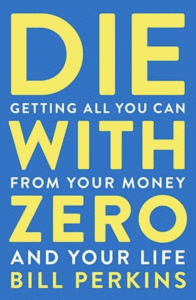This is not your standard portfolio stress test. We aren’t testing any numbers or the value of your portfolio against a simulated market drop.
Nope. We are testing your emotional stress. Investor emotions are probably the most detrimental factor to a portfolio and this stress test will help you control these emotions.
A few well-known investors have now commented on how important emotions and clarity are to investing success. More so than stressing over the price of purchase or the valuation of a stock.
The following quotes are highlighting that you need to understand the business. Read them and let them sync in, please. We will get to the stress test approach with 2 phases.
Building a winning dividend growth portfolio requires confidence.
If you’re prepared to invest in a company, then you ought to be able to explain why in simple language that a fifth grader could understand, and quickly enough so the fifth grader won’t get bored.
Risk comes from not knowing what you are doing.
The stock market is filled with individuals who know the price of everything, but the value of nothing.
Only buy something you'd be perfectly happy to hold if the market shut down for 10 years.
Know what you own, and know why you own it.
1st Phase – Portfolio Stress Test
The last quote is essentially the stress test method. You need to really know why you bought your stocks.
Was it because everyone talked about it at the water-cooler or because you identified a business that provides a necessity with a near monopoly on the market.
- List all of your holdings, just the companies or stock ticker.
- Describe the business in a couple of sentences. Enough for a 5th grader to understand it.
- Write down why you bought it in a few sentences.
- Explain the last two points to another person out loud. Listen to the comments.
- Write down why you are still holding it and review it quarterly.
- Score the confidence level of your purchase. 5 you are very confident and 1 you have no confidence.
The steps above help you build a ledger against your stock holdings.
It would be nice if we could tag our purchases with comments through our discount brokers to have it all in one place but, alas, we must resort to using a good old notebook or a spreadsheet.
Average out your score and if you are below 4, your investing confidence in your portfolio is lacking. You hold stocks that may not stand the test of time – a market crash.
You may want to consider swapping out of the holdings you have with a score under 4 unless you are aware of what you are doing and acknowledge the risk.
2nd Phase – Portfolio Stress Test
You get recessions, you have stock market declines. If you don't understand that's going to happen, then you're not ready, you won't do well in the markets.
We need to accept the inevitable. The markets will go down and you may see your portfolio value go down in market value. How will you react? If the first stress test method leaves you with mixed feelings, you may struggle here.
Selling in a down market can be very detrimental. It’s time to add one column to the ledger or spreadsheet and ask yourself what you would do if each holding was down 25%.
Are you buying more? Are you selling? Are you holding? If you have more sell than buy, you have a problem.
It’s probably ok to have some sell but for a solid portfolio to recover, you want to have more ‘buy’ and ‘hold’ than ‘sell’.
Your spreadsheet would have the following columns:
- Stock Ticker
- Business Description
- Buy Reason
- Quarterly Review
- Score (1-5)
- Market Drop Confidence (Buy / Hold / Sell)
You want to review each points every quarter as even businesses will transform and evolve. You can also consider selling everything that gets a score of 1 or 2.
Investors sometimes end up relying on “hope” to turn a loser into a winner. Let it be known that “hope” is not an official strategy in the investing world.

